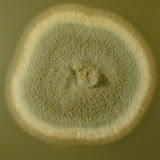A musty, mildewy smell is the undeniable odor of mold. And it may be lurking in more places than you know -- having harmful effects on your health. Now, we tell you how to track down mold.
Holly Russo's tub comes clean now, but there was once a moldy nightmare lurking underneath it. "Our first reaction, when we saw the mold, was absolute horror. I could not believe what was under there. I've never seen anything like it," says Russo.
Mold that's made its way indoors can cause health problems, but many people still don't understand the hazards. Now, industrial hygienists are growing mold to learn more about how it grows, what it grows on, and how mold makes us sick.
"I want to know what makes up that moldy, musty smell. I want to know are there compounds there that can cause people to have health problems," says Terri Pearce, Ph.D., an industrial hygienist for The Centers for Disease Control's National Institute for Occupational Safety and Health (NIOSH).
In a lab, with the perfect blend of moisture and warmth, mold spores, or tiny cells, grow on different types of building materials. With the right amount of moisture, mold can grow faster, turning an ordinary ceiling tile into moldy messes.
Researchers learn which materials withstand mold better -- and which moldy smells come from mold that may cause more serious health problems. "Some of the chemicals that make up that odor actually are known to be irritants and so they can cause people to have respiratory health affects," explains Dr. Pearce.
Learning more about mold helps researchers develop better ways to find it, treat health problems, like asthma and allergies, and teach how vital it is to clean up moldy messes.

No comments:
Post a Comment